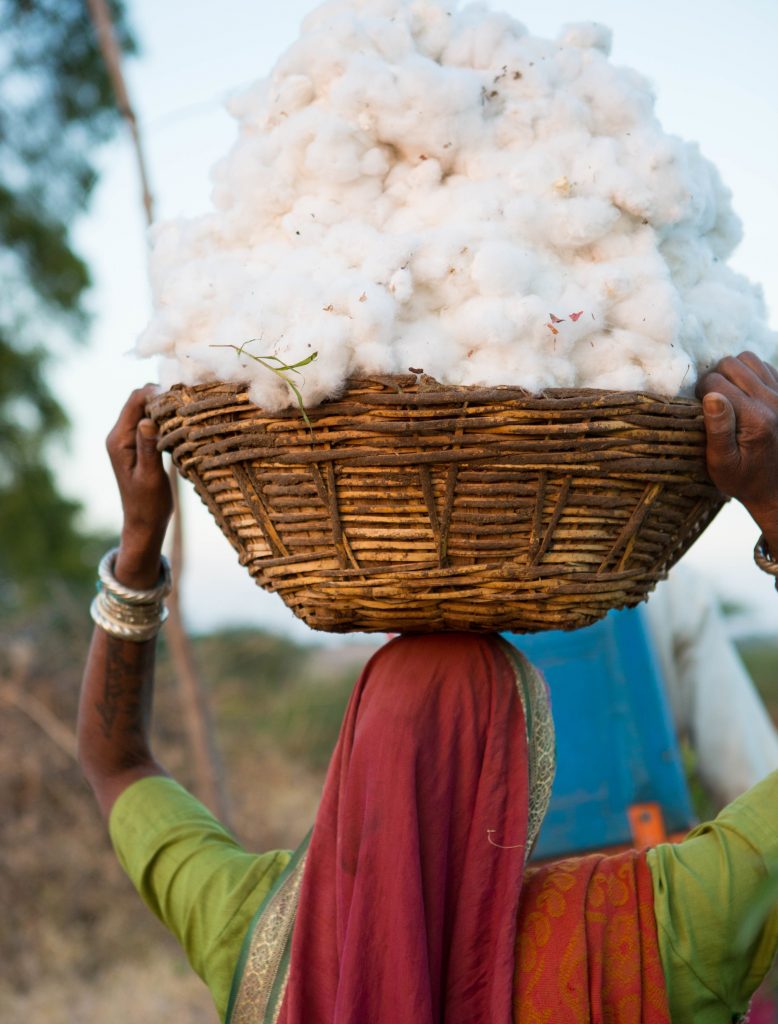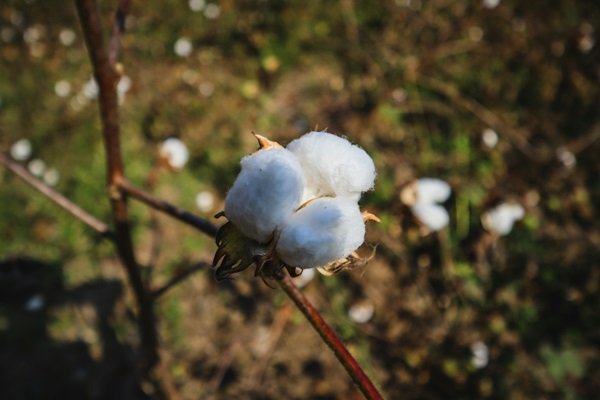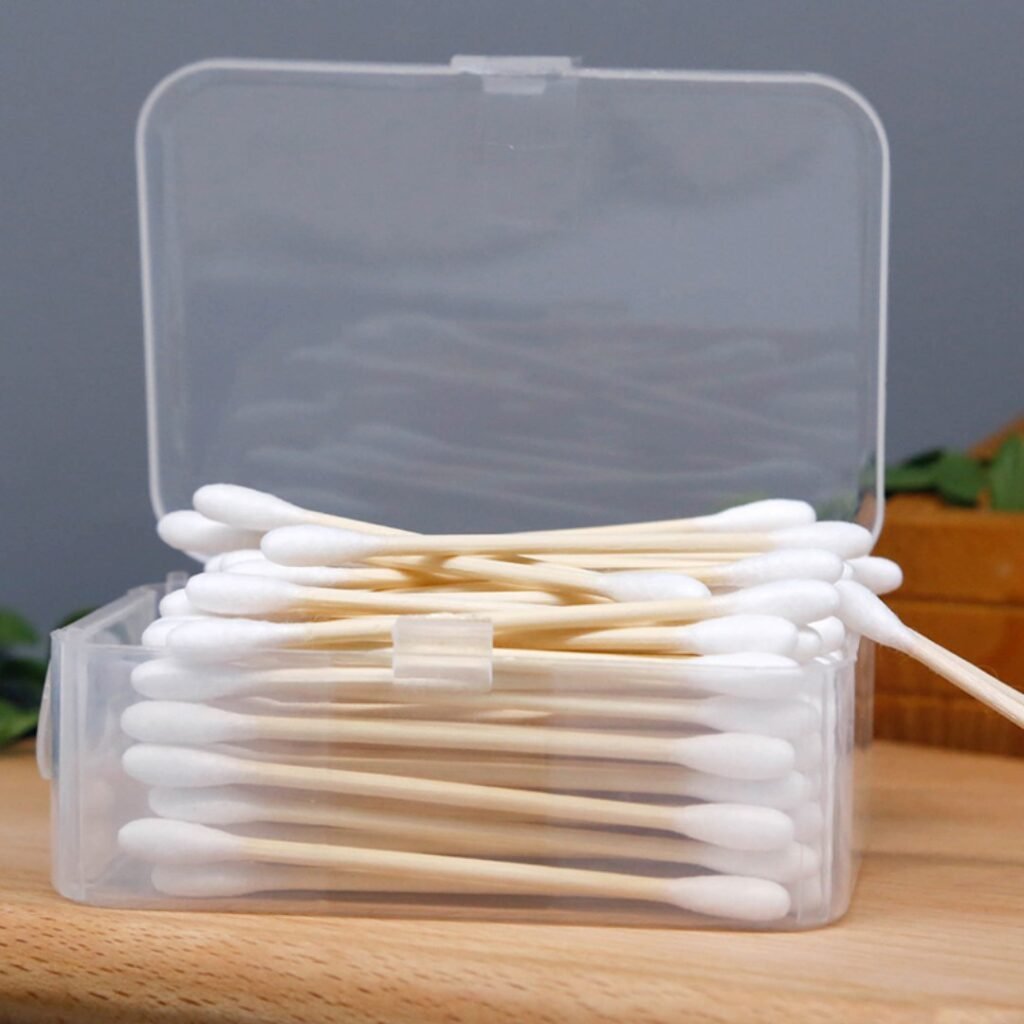I. Introduction: The Organic Revolution in Your Bathroom
Ever noticed the “organic” label popping up everywhere? From food to clothing, conscious consumerism is on the rise. And cotton swabs, those tiny bathroom essentials, are no exception. They’re now at the heart of a big conversation about health, sustainability, and ethical production.
Why the sudden shift? Why are people searching for “organic cotton buds” or “eco-friendly Q-tips”? It’s more than a trend. It’s a response to growing awareness about the environmental and health impacts of traditional cotton.
This guide cuts through the noise. We’ll dive deep into organic cotton swabs. You’ll learn what makes them different, why they’re popular, and how they compare to conventional ones. We’ll also address common concerns, such as safety and pricing. By the end, you’ll see why choosing organic might be an easy, impactful step for your health and the planet.
II. Quick Answers & Key Takeaways
- What are organic cotton swabs? Made from cotton grown without synthetic pesticides, fertilizers, or GMOs. Processed without harsh chemicals like chlorine bleach.
- Why choose organic? Better for your health (fewer chemical residues, less irritation), better for the environment (sustainable farming, less pollution), often softer and purer.
- Safe for babies? Yes, generally safer due to its chemical-free nature and hypoallergenic properties. Always use it with caution.
- What certifications? Look for GOTS (Global Organic Textile Standard) or ICEA. These ensure strict organic and ethical standards.
- Are they more expensive? Typically higher priced. This reflects the costs of sustainable farming and ethical processing. Benefits often outweigh the marginal cost.

Image: Organic cotton is processed without harsh chemicals, ensuring a purer product.
III. The Organic Story: From Farm to Swab
To truly appreciate organic cotton swabs, let’s understand cotton’s journey. For decades, conventional cotton farming dominated. But this comes at a significant cost.
A. The Problem with Conventional Cotton: A Hidden Cost
Here’s why:
- Pesticides and Chemicals: Heavy reliance on synthetic pesticides, herbicides, and fertilizers. These chemicals don’t just stay on plants. They seep into soil, contaminate water, and leave residues on the final product. Think about chemicals in something you use on sensitive skin.
- Environmental Impact: The environmental toll is huge. Pesticides and fertilizers lead to soil degradation, biodiversity loss, and water pollution. Irrigation can deplete water resources. It’s a cycle that harms the planet.
B. The Organic Solution: A Cleaner Path
Recognizing these issues, organic cotton emerged. It’s a fundamentally different approach, prioritizing environmental health and consumer safety.
- Sustainable Farming: Organic cotton grows without synthetic pesticides or fertilizers. Farmers use natural methods like crop rotation, composting, and beneficial insects. This fosters healthier soil, conserves water, and supports ecosystems.
- No Harmful Chemicals: From seed to product, organic cotton avoids GMOs and harsh chemicals. No toxic pesticides in fields, no harsh bleaches. Organic cotton is typically bleached with hydrogen peroxide, a gentler, eco-friendly alternative.
- Eco-Friendly Processing: The entire organic cotton supply chain focuses on sustainability. Processing minimizes environmental impact, reducing water and energy use. The goal: a product as pure as nature intended.
C. Why the Demand? Consumers Choose Organic
The shift to organic cotton isn’t just about the environment. It’s driven by consumer awareness and demand for safer products.
- Health Concerns: Consumers are increasingly aware of chemical residues in everyday products. For cotton swabs used on sensitive skin, eyes, or even internally, the absence of harsh chemicals is a major plus. Parents especially seek pure options for babies.
- Environmental Consciousness: Many consumers actively reduce their environmental footprint. Choosing organic cotton supports sustainable agriculture, reduces pollution, and conserves resources. It’s a way to make a positive impact daily.
- Baby Safety: For new parents, safety is paramount. Organic cotton swabs offer peace of mind. They’re free from potentially irritating chemicals, a significant driver in the organic market.

Image: Organic cotton farming avoids harmful pesticides, promoting healthier ecosystems.
IV. Organic vs. Conventional: The Key Differences
Is the difference between conventional and organic cotton swabs truly significant? Let’s compare.
A. Health & Safety: Purity for Your Skin
This is the most critical comparison, especially for sensitive uses.
- Hypoallergenic: Conventional cotton, with its residues and byproducts, possibly irritate sensitive skin. Organic cotton, free from harsh chemicals, is inherently more hypoallergenic. It reduces redness, itching, or rashes for those with allergies or sensitive skin.
- Chemical-Free: No chlorine bleaching means no dioxins. Dioxins are toxic pollutants linked to health issues. Choosing organic eliminates this concern.
- Safe for Sensitive Uses: Organic cotton swabs offer peace of mind for parents and anyone using them in delicate areas. Their chemical-free nature provides added safety and purity.
B. Environmental Impact: A Greener Footprint
Organic cotton production offers significant environmental advantages.
- Reduced Water Usage: Conventional cotton is very thirsty. Organic farming, with its focus on healthy soil and natural water retention, significantly reduces water consumption. This is vital in water-stressed regions.
- Healthier Soil: Synthetic chemicals deplete the soil. Organic farming enriches soil through composting and crop rotation. This leads to healthier, more fertile soil for future generations.
- Biodegradability: Both types of cotton are biodegradable. But organic cotton, free from synthetic residues, breaks down more cleanly. It returns to the earth without harmful chemicals, contributing to a healthier ecosystem.
C. Performance: Softness, Absorbency, and Durability
Performance matters, too. How do organic cotton swabs feel and function?
- Softness and Absorbency: Organic cotton often feels softer due to natural processing. Without harsh chemicals, fibers retain integrity, resulting in a plush feel and better absorbency. They’re effective for skincare or spills.
- Durable Shafts: The shaft material is crucial for durability and environmental impact. Organic swabs often use biodegradable paper or bamboo shafts. These are sturdy for use and break down naturally, reducing plastic waste. They’re also safer if broken.
D. Price Factor: The Cost of Consciousness
Organic cotton swabs typically cost more.
- Why Higher Cost? It reflects sustainable and ethical production. Organic farming is more labor-intensive and yields slightly less. Certification processes also add cost. Demand is growing, but economies of scale aren’t as significant as with conventional cotton.
- Justification: Many view it as an investment. You invest in your health by reducing chemical exposure. You invest in the planet by supporting sustainable agriculture. The peace of mind and ethical alignment often outweigh the marginal price difference.

Image: Look for GOTS certification to ensure genuine organic cotton products.
V. Features and Uses of Organic Cotton Swabs
Organic cotton swabs are versatile tools, offering specific features for various applications.
A. Key Features
- 100% Pure Organic Cotton: Grown and harvested without synthetic pesticides, herbicides, or GMOs. This purity means a cleaner, safer product.
- Chlorine-Free/Unbleached: Processed using hydrogen peroxide or left natural. No harmful dioxin residues.
- Hypoallergenic: Less irritating due to the absence of harsh chemicals. Great for sensitive skin, allergies, or eczema.
- Biodegradable Shafts: Often made from sustainably sourced paper or bamboo. Biodegradable and compostable, reducing plastic pollution.
- Securely Attached Tips: Tips are firmly bonded to the shaft. Prevents detachment, which is vital for safety, especially with babies.
B. Common Uses: Where Purity Shines
Organic cotton swabs are valuable for tasks where purity and precision are key.
- Beauty & Personal Care: Makeup correction, nail polish removal, skincare application. Gentle for sensitive areas.
- Baby Care: Gentle cleaning of the outer ear, navel, nostrils, and eyes. Applying creams. (Always remember: NEVER insert into the ear canal.)
- First Aid: Applying antiseptics and cleaning small wounds precisely.
- Electronics Cleaning: Soft, lint-free nature makes them suitable for delicate components like keyboards or camera lenses.
- Arts & Crafts: Precision application of glues, paints, or solvents. Detailed work.

VI. Navigating the Market: What to Look for
Know how to identify genuine organic cotton swabs. Not all “natural” claims are equal.
A. Certifications: Your Guarantee
Certifications from recognized bodies ensure the product meets strict organic standards.
- GOTS (Global Organic Textile Standard): The leading standard for organic fibers. Ensures organic growth and ethical processing. Look for the GOTS logo.
- ICEA (Istituto per la Certificazione Etica ed Ambientale): A European certification body for organic and eco-friendly products.
- USDA Organic (if applicable): Primarily for food, but some cotton products may carry it, indicating organic growth per USDA regulations.
Why Certifications Matter: They involve rigorous third-party audits. They provide transparency and accountability, ensuring you buy a truly organic product free from greenwashing.
B. Material Transparency
Clear labeling of materials is crucial.
- 100% Pure Organic Cotton: Explicitly stated on packaging. Avoid vague terms without organic certification.
- Shaft Material: Indicated. Paper and bamboo are eco-friendly choices.
- Bleaching Process: Should state “chlorine-free,” “unbleached,” or use of hydrogen peroxide.
C. Packaging: Eco-Friendly from Start to Finish
Sustainability extends to packaging.
- Recyclable, Compostable, or Biodegradable: Look for these. Avoid excessive plastic.
- Minimalist Design: Eco-conscious brands often use minimalist packaging to reduce waste.
D. Brand Reputation
A brand’s reputation for sustainability and quality adds assurance.
- Research the Brand: Check their commitment to ethical sourcing and environmental responsibility.
- Customer Reviews: Offer insights into performance and satisfaction.
E. Quantity and Value
Consider your usage and look for value.
- Bulk Options: Can reduce per-unit cost.
- Consider the “True Cost”: The higher price reflects environmental and health benefits. It’s an investment.

Image: Swabmasters is committed to a sustainable future with upcoming organic cotton swab production.
VII. Swabmasters and the Future of Organic Cotton Swabs
At Swabmasters, we provide high-quality, reliable cotton swab solutions. We understand the growing demand for sustainable products. While our current focus is on conventional and specialized swabs, we are actively listening to our customers and market trends.
We believe in continuous innovation and responsible manufacturing. That’s why organic cotton swabs are a significant part of Swabmasters’ future product development plans.
Our experts are developing a new organic cotton swab line. This initiative is driven by our dedication to:
- Environmental Stewardship: Minimizing our ecological footprint by sourcing 100% certified organic cotton and using eco-friendly processes.
- Uncompromised Purity and Safety: Our organic line will be free from harmful chemicals, ideal for sensitive applications, including baby care.
- Meeting Evolving Consumer Needs: Our future organic swabs will meet demands for health, sustainability, and ethical production without sacrificing performance.
We are meticulously working on every detail, from sourcing the finest GOTS-certified organic cotton to developing innovative, biodegradable shaft materials. Our goal: an organic cotton swab that exceeds expectations for purity, performance, and environmental responsibility.
Stay tuned for exciting updates on our upcoming organic cotton swab line! We’re eager to share our progress and introduce products for a cleaner, greener future.
VIII. Conclusion: Making the Conscious Choice
The journey to organic cotton swabs is more than a product switch; it’s a step towards conscious consumerism. We’ve explored the hidden costs of conventional cotton and the clear benefits of organic alternatives.
Choosing organic cotton swabs means opting for purity, sustainability, and peace of mind. It means supporting sustainable farming, avoiding harsh chemicals, and contributing to a healthier planet. While a slightly higher price, the long-term value in health and environmental impact is undeniable.
Our choices have power. By selecting organic cotton swabs, you’re not just buying a product; you’re voting for a more sustainable, healthier future. It’s a small change that can make a big difference.
IX. Call to Action
Ready to explore high-quality cotton swab solutions? Visit the Swabmasters website today to browse our current range.
Are you a business looking for a trusted partner for sustainable and organic cotton swabs? Swabmasters offers customization and private label solutions. Contact our expert team to discuss your requirements. Partner with Swabmasters for excellence in sustainable cotton swab manufacturing.


